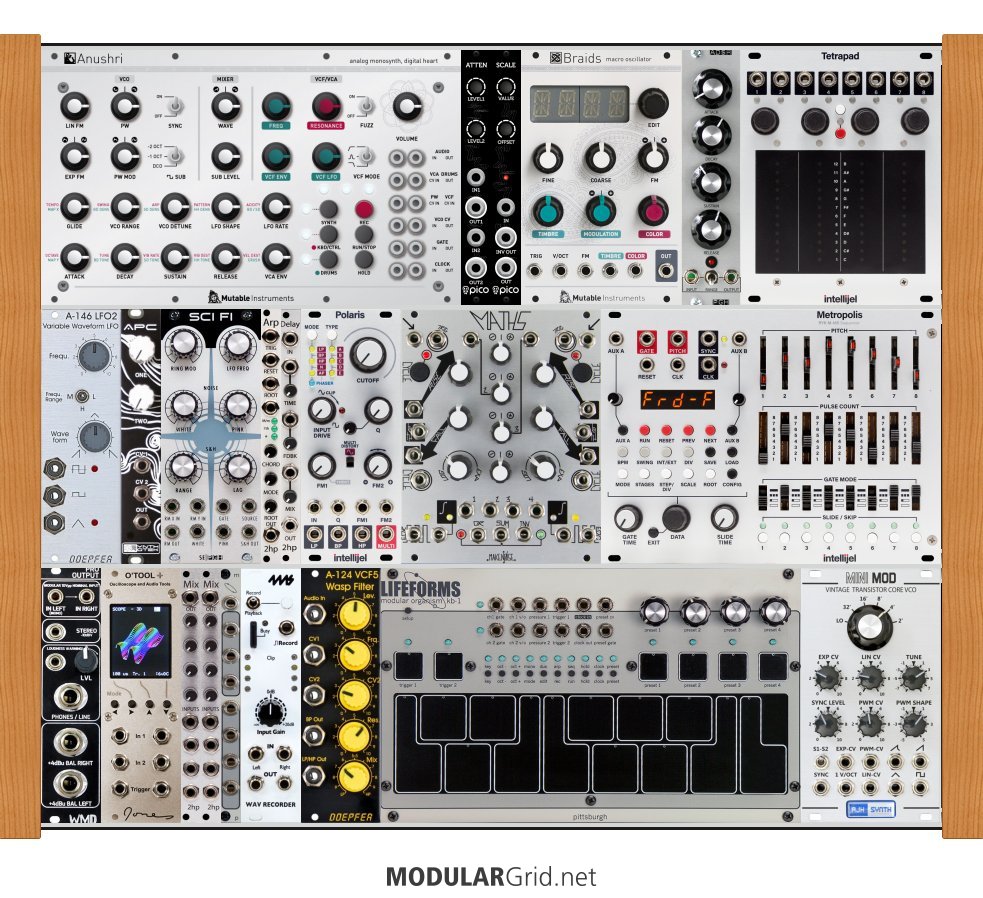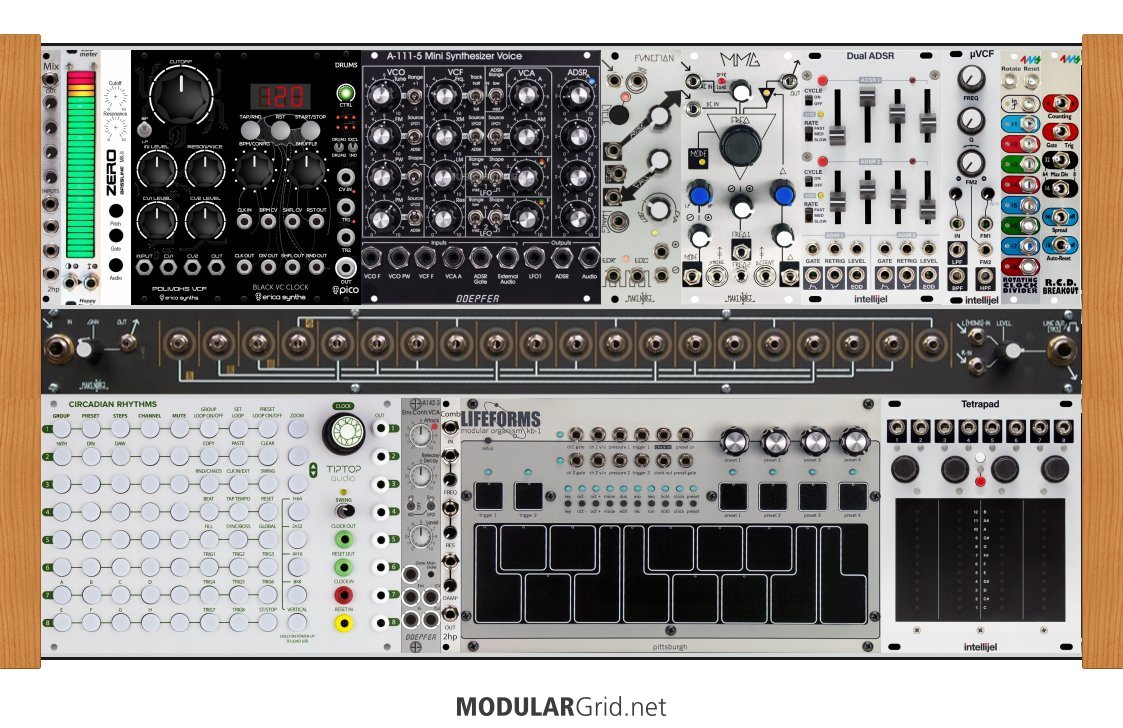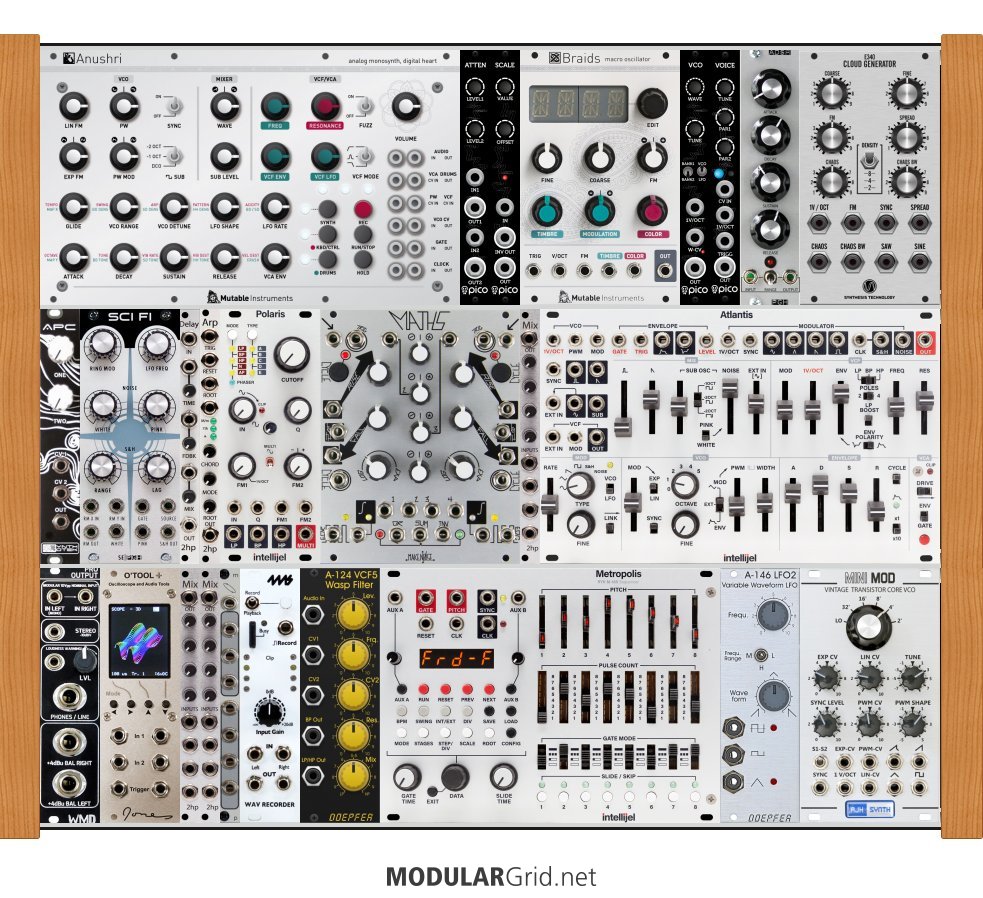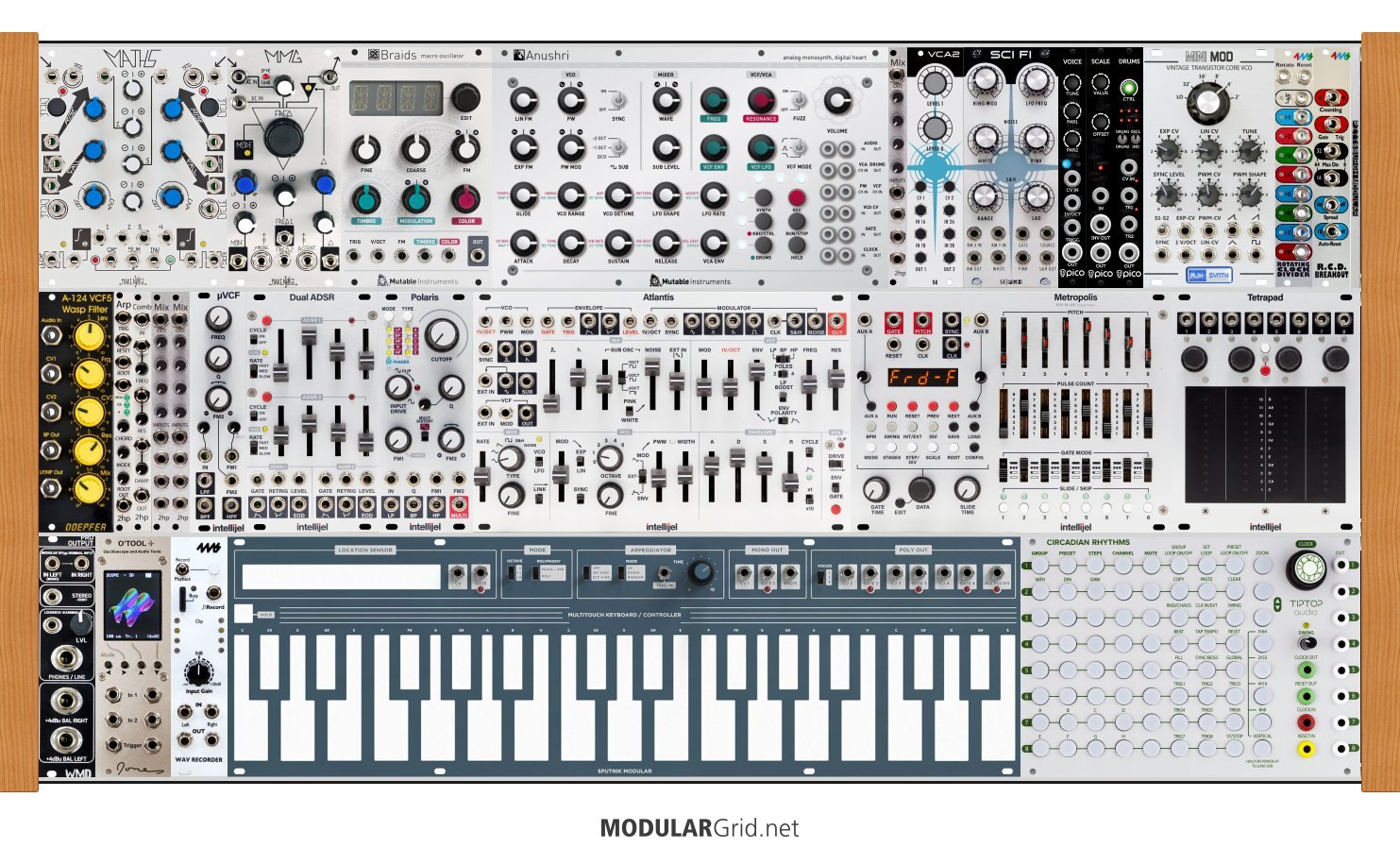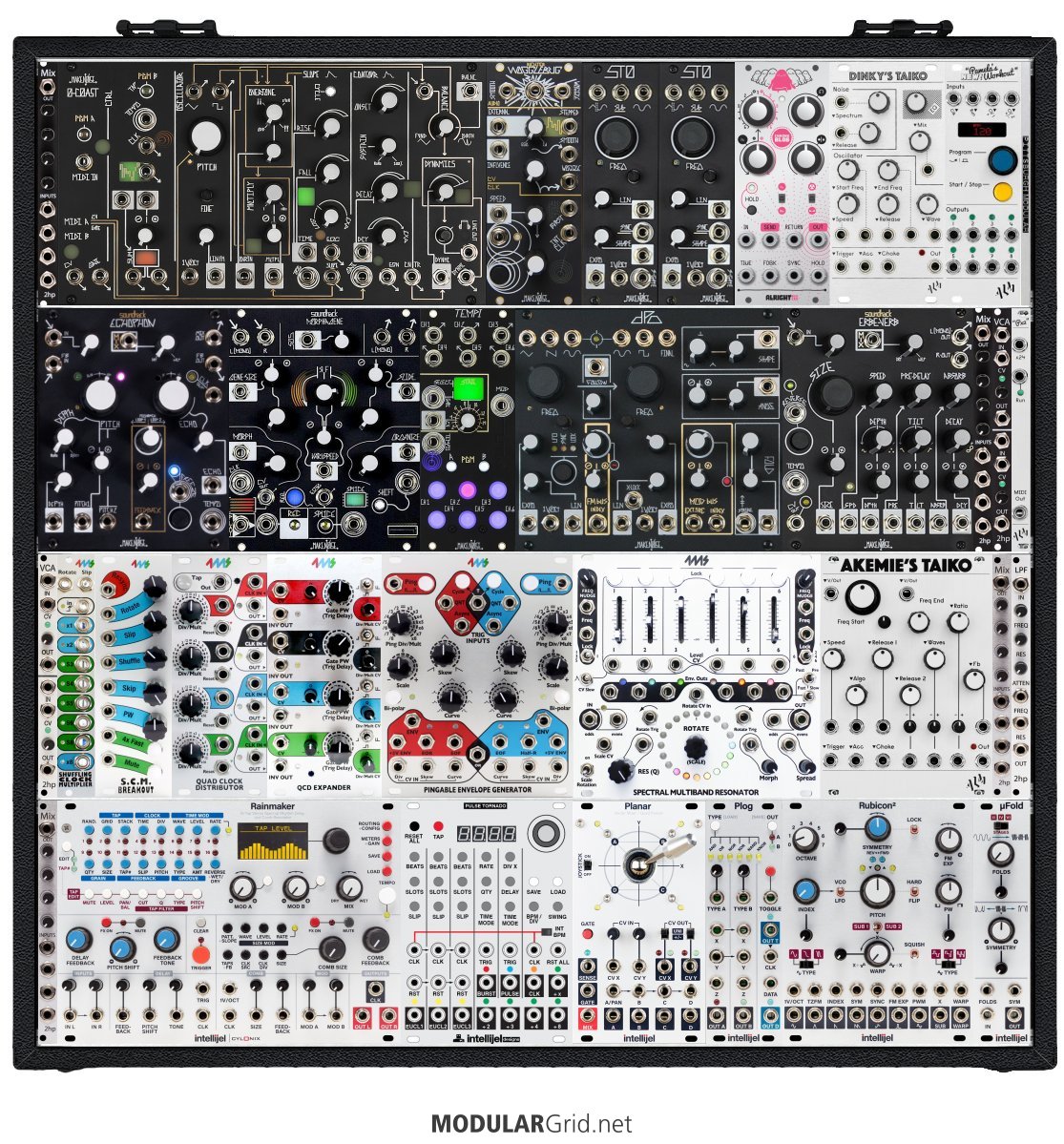July ain't much for modular, normally. The only big show around is Summer NAMM, which as I've noted before is known also as 'Guitar NAMM'. Not smart, actually, since the show's in Nashville and while some people tend to stereotype Nashville as a 'guitar town', the real fact is that the city's been neck-deep in all sorts of tech for many, many years, some of it even in prototypical form. Anyone here ever lay hands on a McLeyvier, for example? I have...and yep, it was in Nashville. How about a Quantec Room Simulator? Yep, that too. First Roland 100m, or Moog IIIc, Chroma (ARP-badged, mind you!), or ARP 2600? Nashville, for me. The synth crowd needs to get on top of Summer NAMM, really...Nashville isn't all pointy boots and twangy gee-tars. Anyway, that being said, it's...
KICK ASS!!! for July 2018.
In which I root around in MG's seemingly-endless Eurorack listings for stuff that looks and sounds interesting, abuseable, and otherwise the sort of stuff that modularheads might want pointed out to them so they might not miss it in amongst the Eurorack deluge. So....to begin:
1) Patching Panda VIBRAZUM. It's a triple resonator. Or it's three bandpass filters. Or it's three filters pretending they're a mixer. Or, or, or...lots of 'or' here. This module is actually all of those things, and potentially a few more. Full CV over three 2-pole bandpasses, each with the option of a direct VCF out or the ability to mix to a single output. It's pretty bonkers, and sounds quite nuts in PP's video example. One thing I like, also, is the size: 14 hp, which for a triple-resonator-type device is rather convenient. About the only thing I'm missing here are individual VCF-ins, but hey...this is impressive enough as-is. $231, also kit @ $175-ish via Thonk.
2) Eowave Swing. This is a pretty nifty thing to jam into all of 5 hp. You get, count 'em, four clock delays under the same incoming pulse, with the extras of an onboard reset function, and three delay modes: absolute, probability (no info whether that's over a timing variation or a skipping function), and burst mode. This one's kind of a “you need a peek at this”-sort of thing for anyone doing a drumkit or sequencer-heavy build, as this has some nice timing mojo capabilities, and it's easy to squeeze in. $111.
3) G-Force Audio 101-VCF. Ohhhhh, yeahhh...this gets my attention right off the bat! Had a 101 for a long while, then later an MC-202 (about the same thing, soundwise), still semi-regretting not having either. Why? That beefy, intense sound...and that sound's key is this filter. G-Force says this is damn close to an exact replication, right down to the OTA chip wherein lies the magic. But they also add a two-channel mixing input and separate, attenuated CV inputs for cutoff and resonance. And it's blue...perhaps because some SH-101s were, too? Who knows? $210 is well spent here.
4) Recovery Effects and Devices Bleeding Hearts. Really, the video for this does much more explaining by example than I might be able to do, but here goes...it's a bit-crusher/waveshaper/distorter...but it has its own onboard 8-step sequencer for controlling the mayhem, in addition to external CV/gate control. Sound-wise, it's sweet...while I'm sure it can be pushed in the direction of digital mangleage, aliasing, and the like, what I heard was super-excellent analogish low-end gritty fatness derived from a...sine wave? OK, I'm impressed! Those seeking beefy crunchiness should have a look-see. $229.
5) Fancyyyyyy Rung Divisions. An unholy cross between the main bits of the infamous Benjolin and a clock divider, this thing is kinda nuts! It uses the chaotic aspects of Rob Hordijk's random-synth module plus some math/logic voodoo to create a core that allows the user to, well, “Benjolinize” (hey, i inventd a werd! kewl!) pretty much anything you opt to connect up to it. So instead of simply having the Benjolin's rungler circuit doing the usual thing within that module, it's possible to take that same chaotic behavior and have it do...well, anything you want, anywhere you can think of it. Again, too complex to explain in a blurb like this; check the actual module page for an extensive (and scaaaaary!) list of some possibilities, although this thing is so deep in the abuse potential zone that that list only scratches the surface. $314.
6) Ladik L-124/125 Harmonics LFOs. Oh, yeah...now this is sweet. Two different LFOs, two different methods. The L-124 is a sine LFO with taps for the fundamental (300+ secs – 20 Hz) plus four harmonics of that fundamental. Additive-ish...but we're way on down in the modulation zone here, even though you could conceivably get audio out of the harmonics taps at the upper range. The L-125 is a different critter, tho...fundamental, plus two user-settable harmonic taps that can be ranged between the 2nd and 12th partials, plus the ability to jumper-select some additional phase-angle fun on each tap. Both mix their composite signals down to a single output for a nicely-complex modulation signal, and both go for the stoopid-cheap price of $62 each!
7) Retro Mechanical Labs GPI. Effects pedal send/return done right. This module gives you two mono channels of send and return, with trimmable levels to the pedal send outputs, and dual multed outputs on the return. Very simple, very nicely-done, and very open-ended, since you have no worries about how to deal with the channel differences between mono and stereo pedals. The price, also, is killer...$89. A great price, one low enough that one might not be enough!
8) Takaab 2LPG. And last, with the least in the price department, is Siam Modular's passive low-pass gate pair. Yes, passive...no power needed! I wish these had a demo, but judging from the description, these seem to have some tonal similarities to the old Buchla 100 LPGs. Also some behavioral ones, since lower cutoff frequencies appear to give shorter decay times, which I seem to recall being a 'quirk' of the early Buchla LPGs. But they're nowhere as big; the duo takes up only 3 hp. Being passive, though, a bit of signal gain after these would be a good idea, since they're apt to be a bit lossy in terms of gain structure. But...holy cats, they're only $32!? Someone get me a spatula...my jaw's on the floor!!
So, yeah...that's it for July. August will be interesting, though, as that month is a big ramp-up to Knobcon, with the AES show about a month later. Time for those synth module makers to get big busy!


